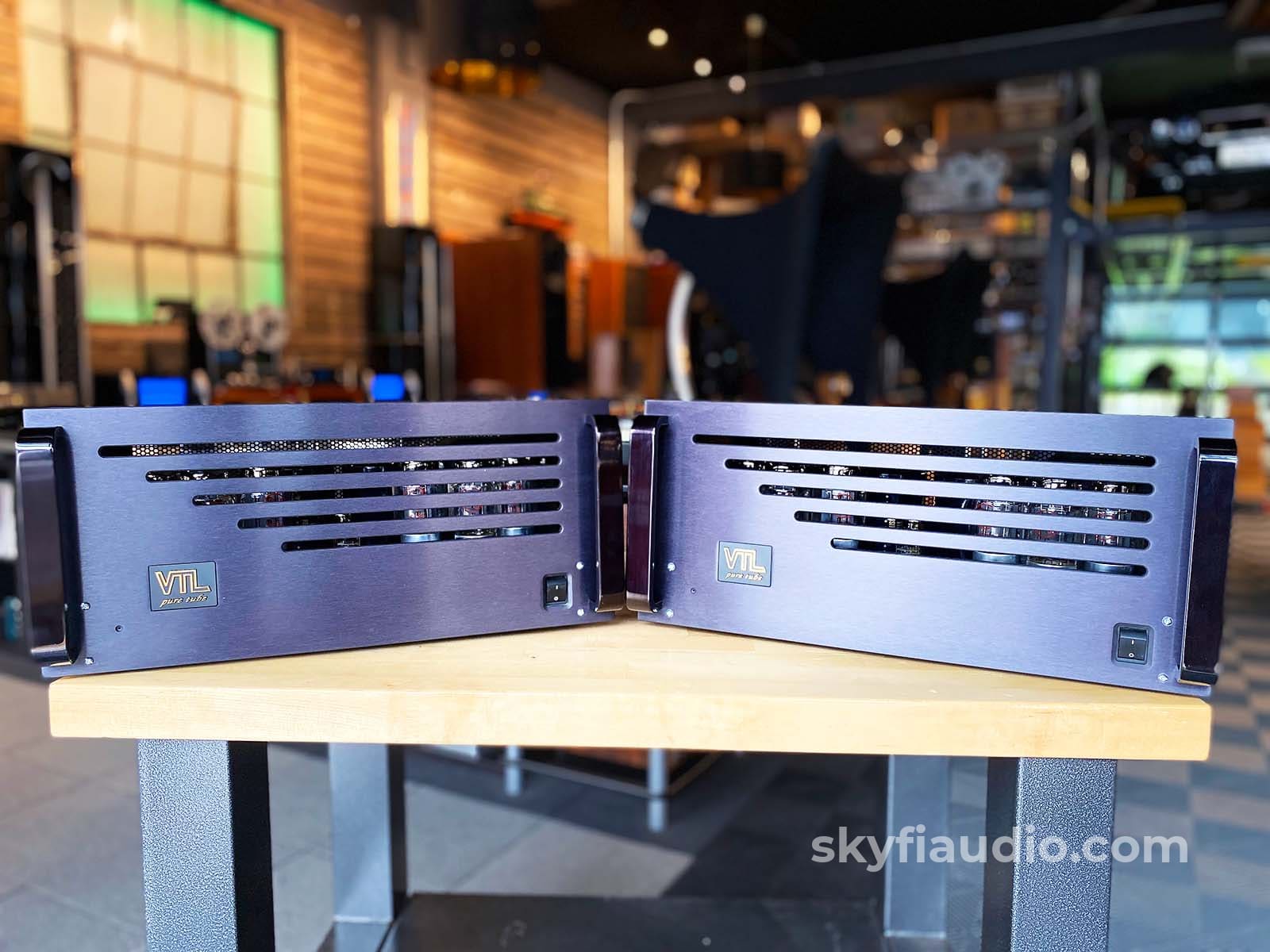
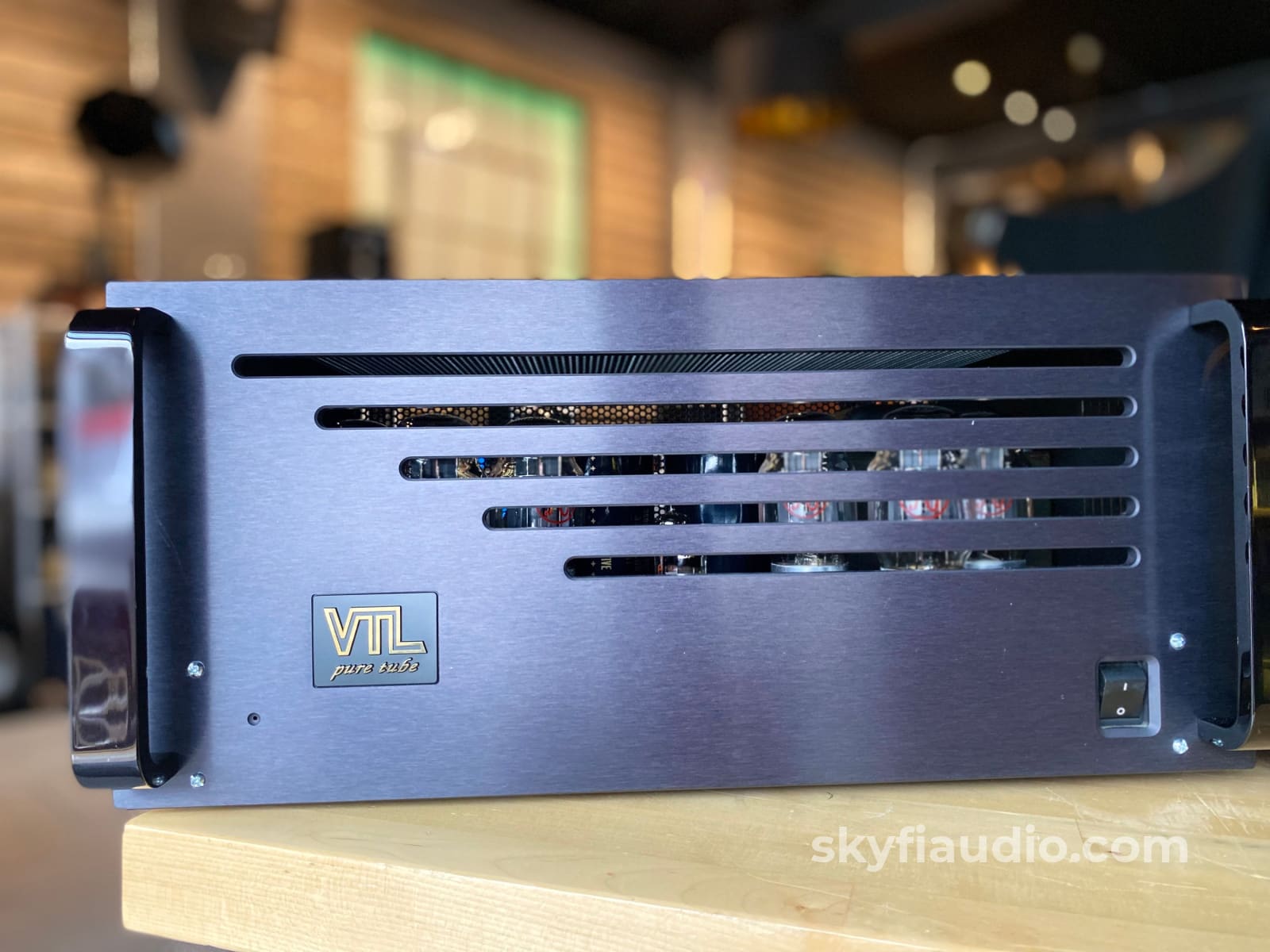
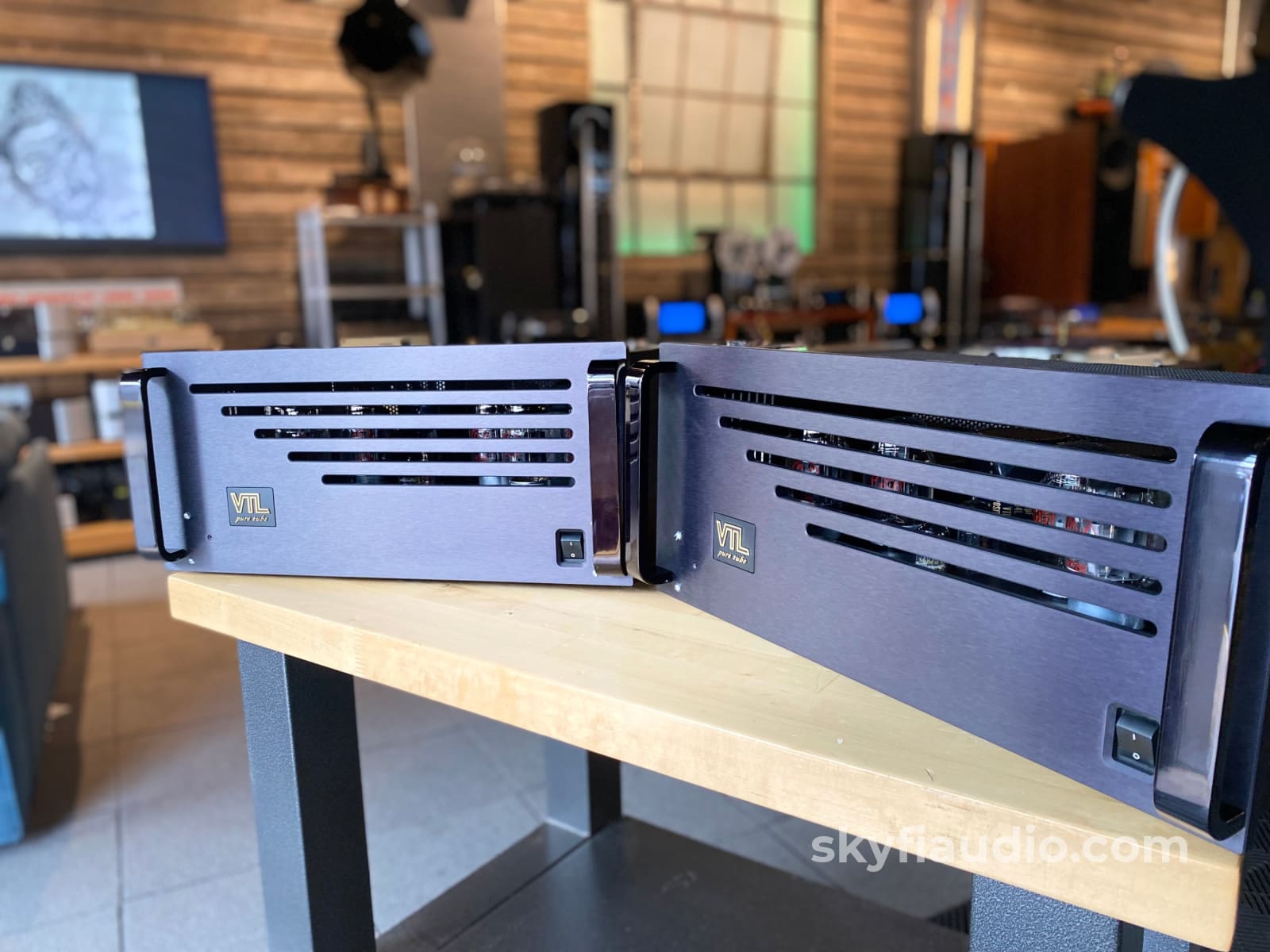
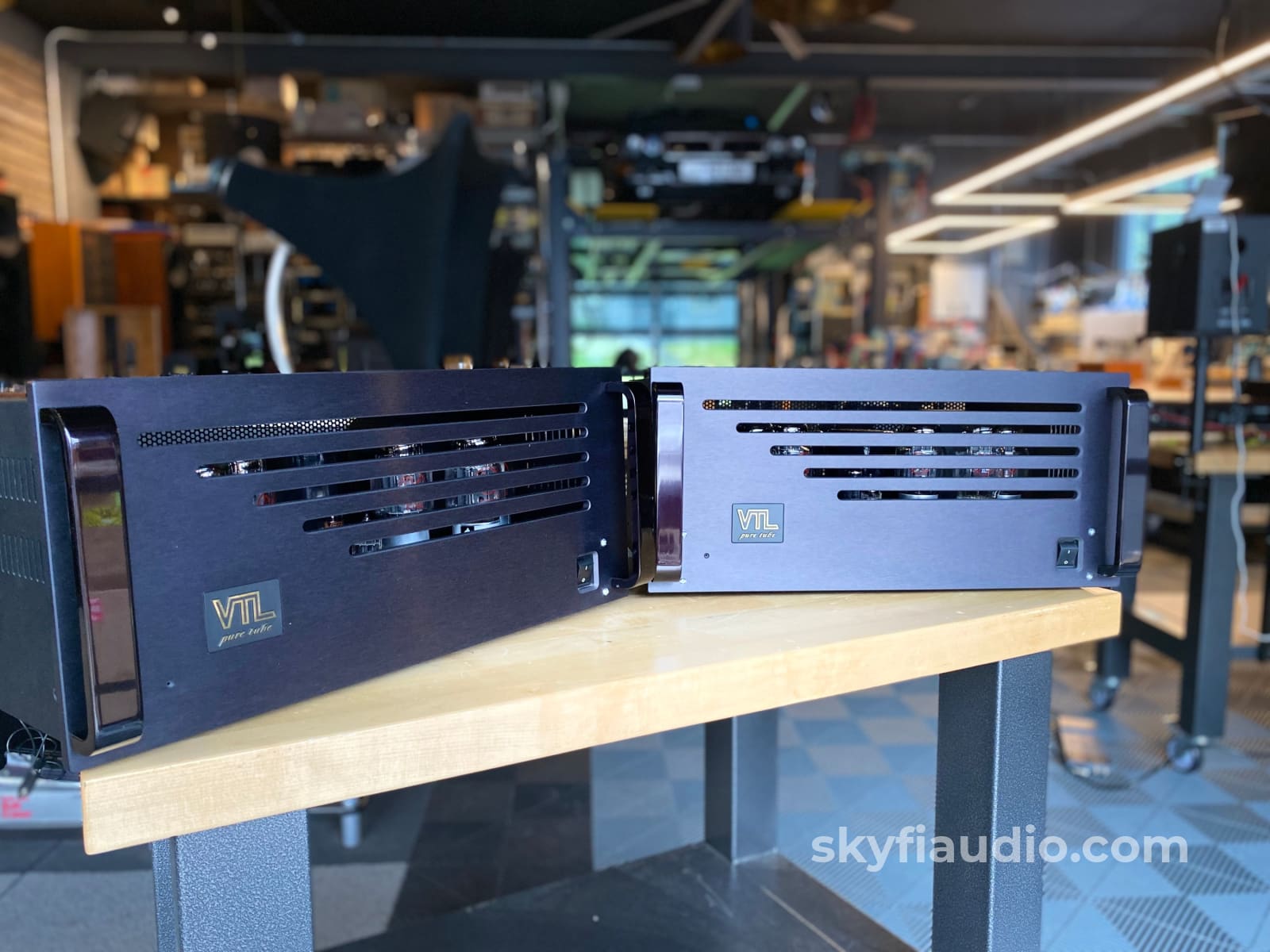
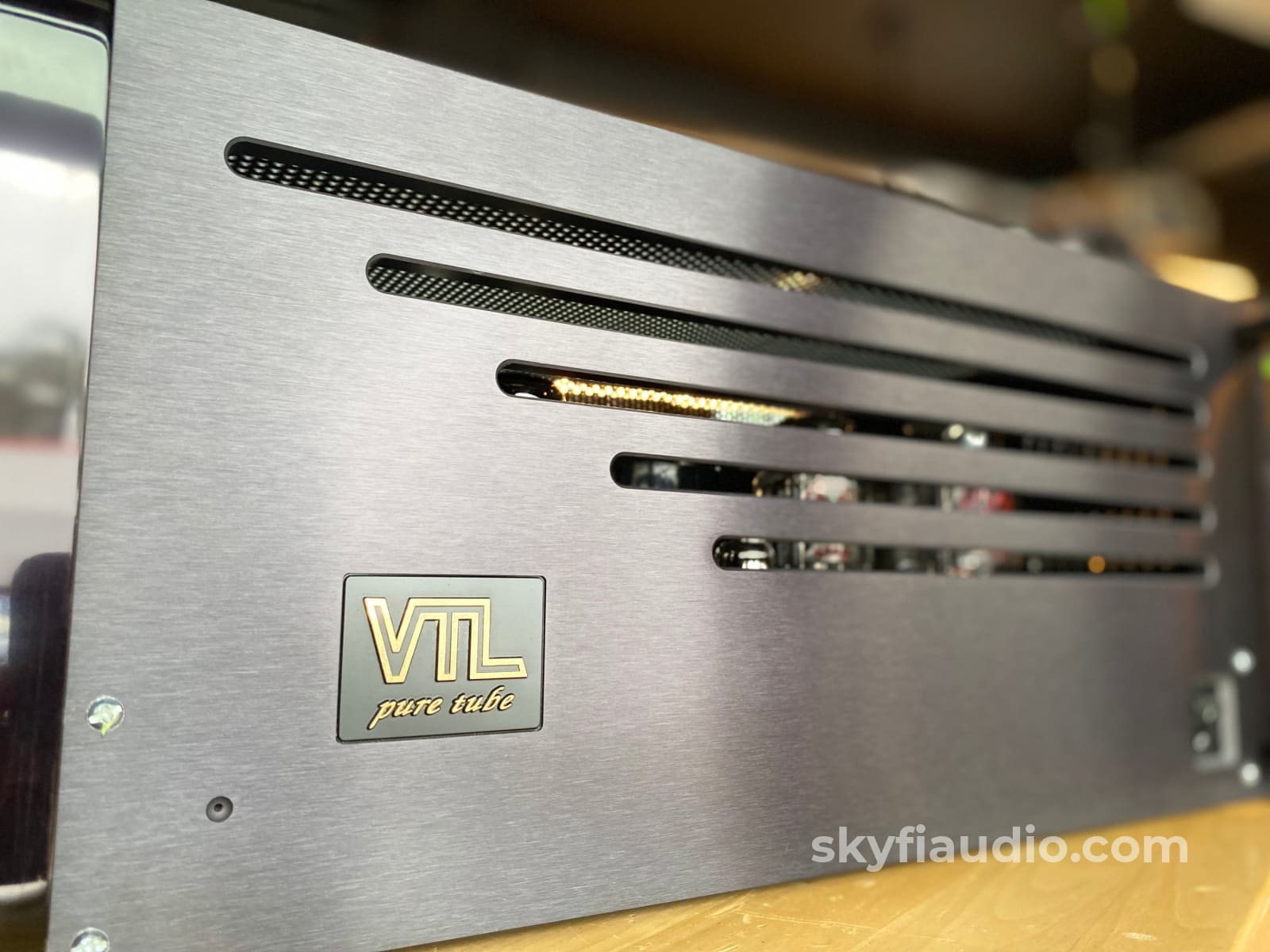
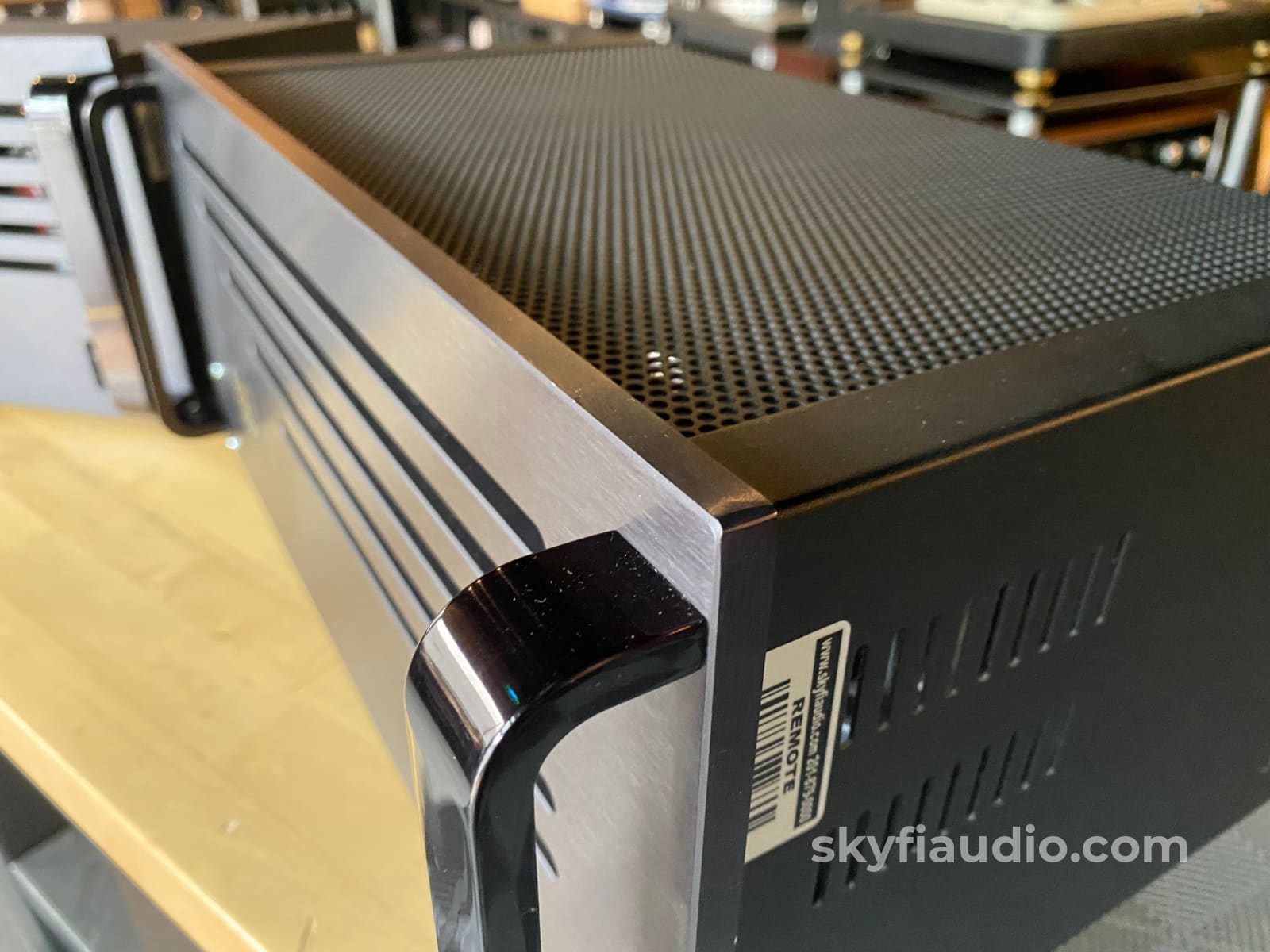
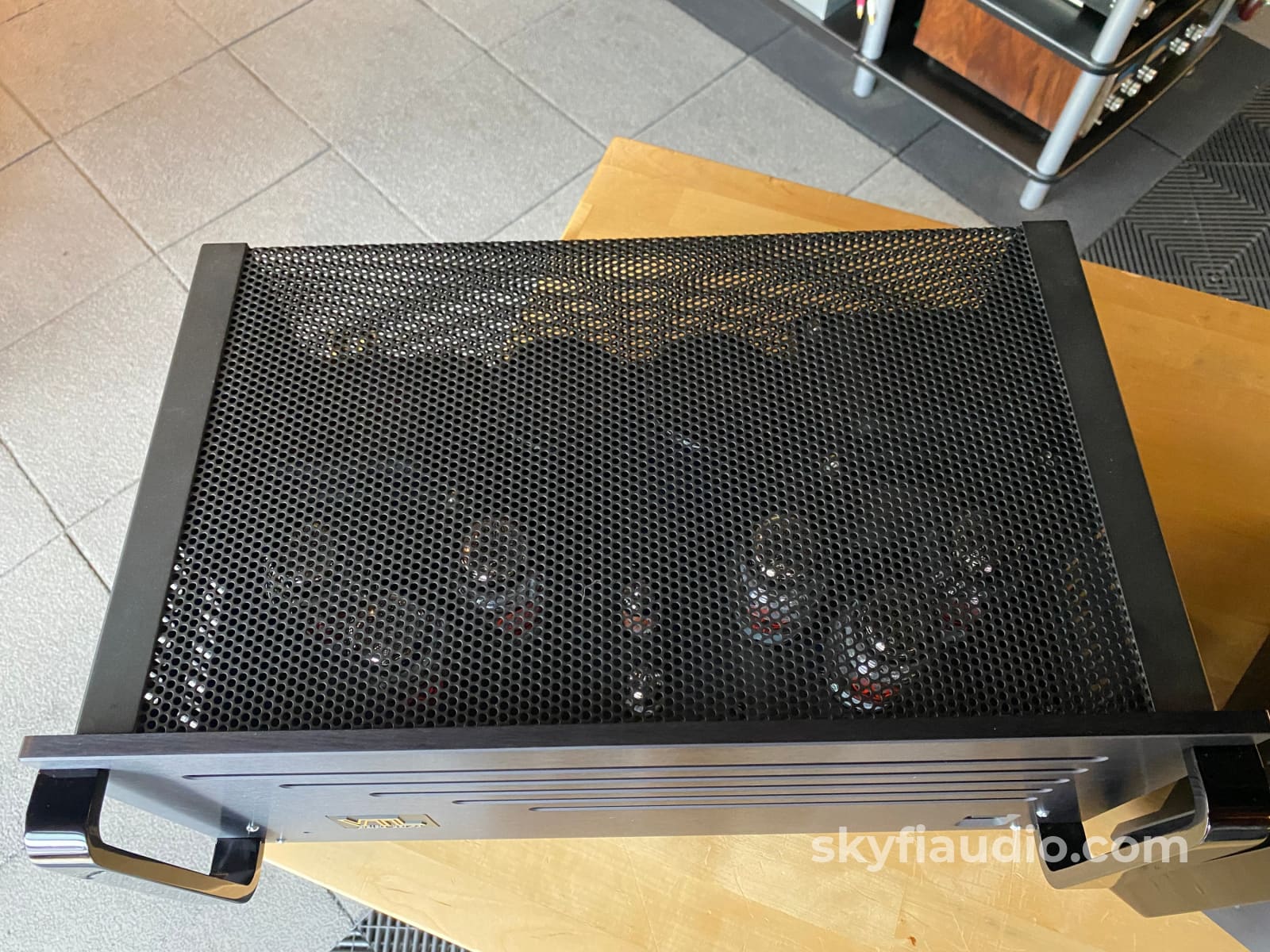

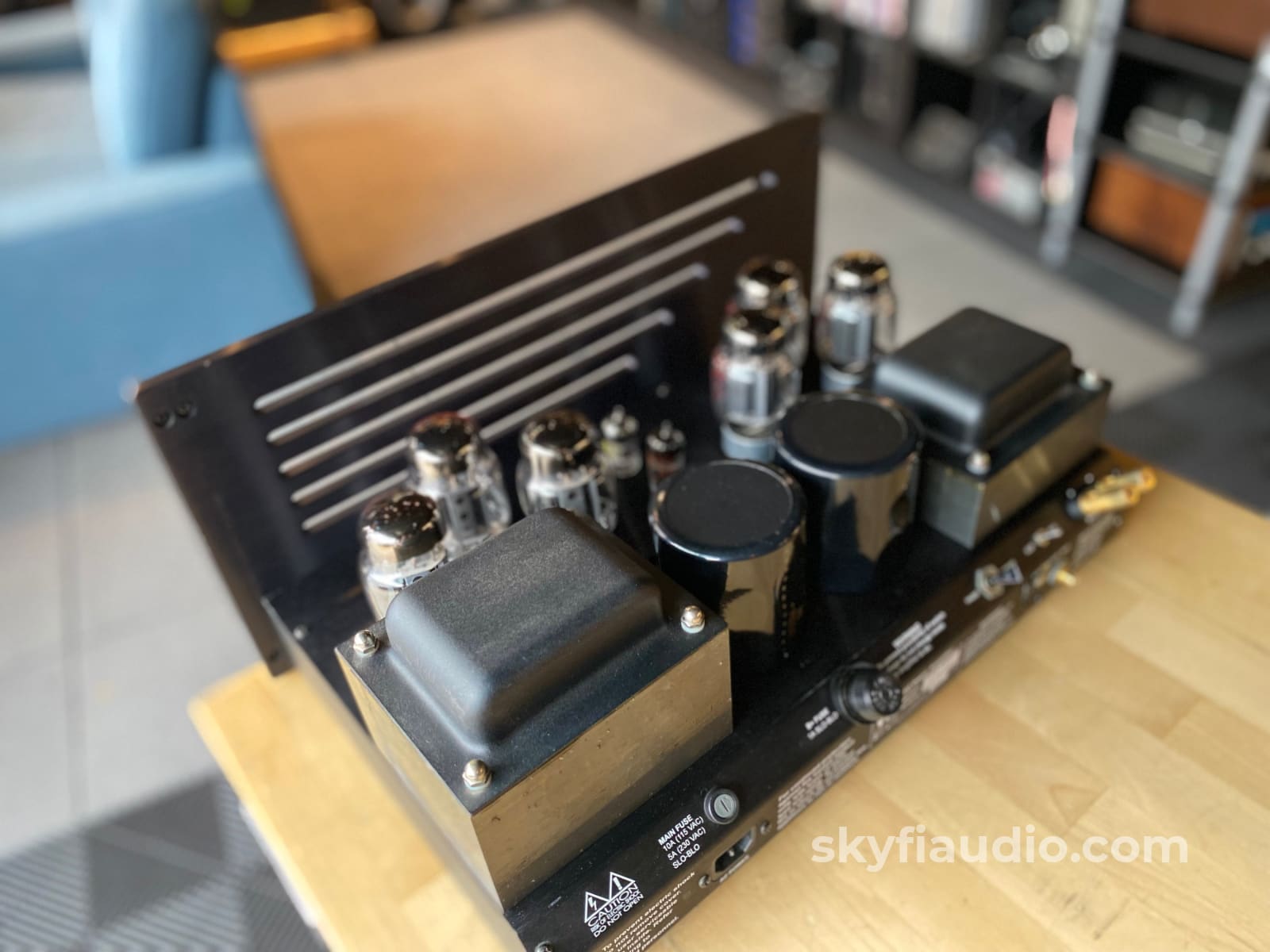

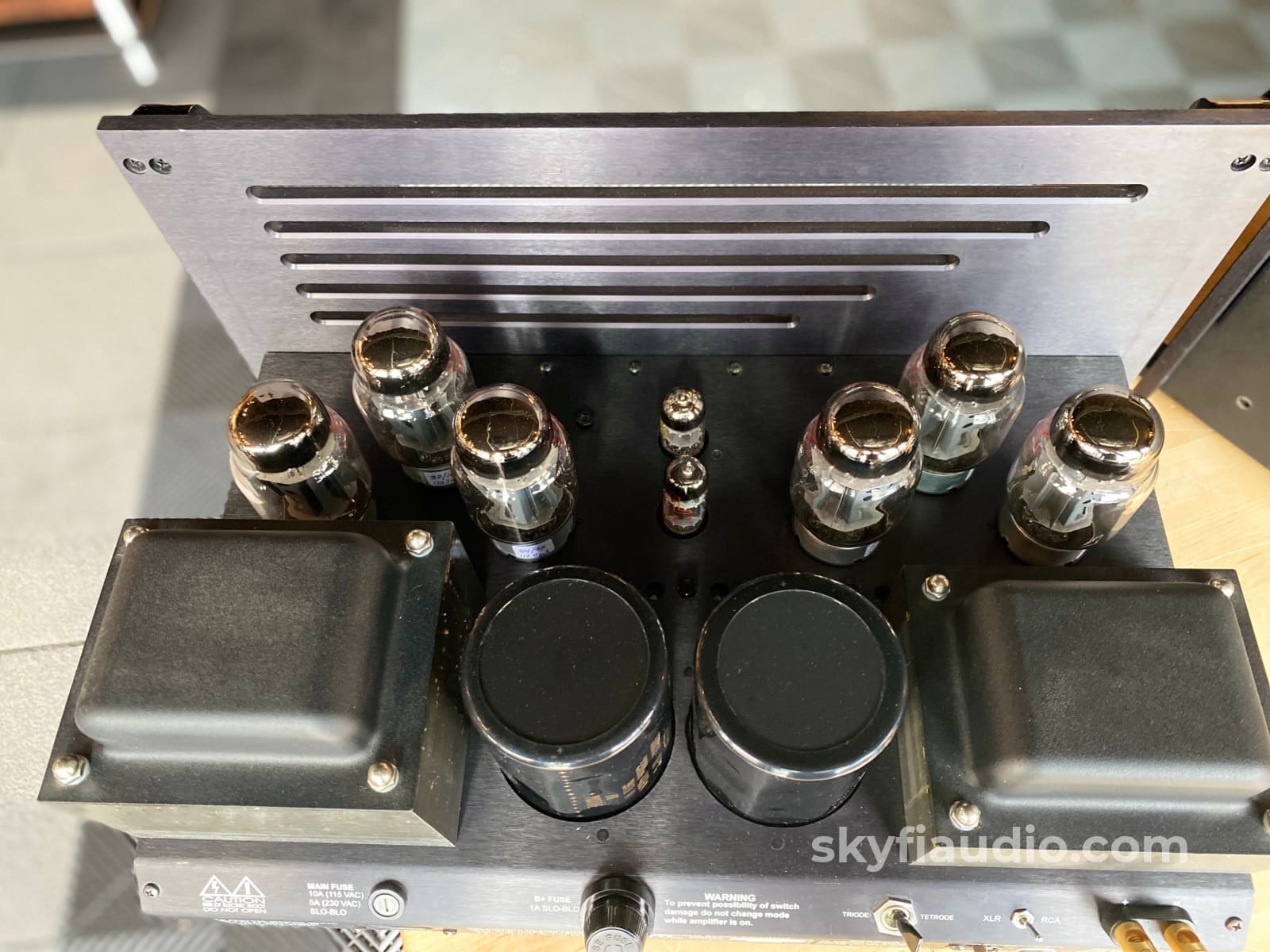
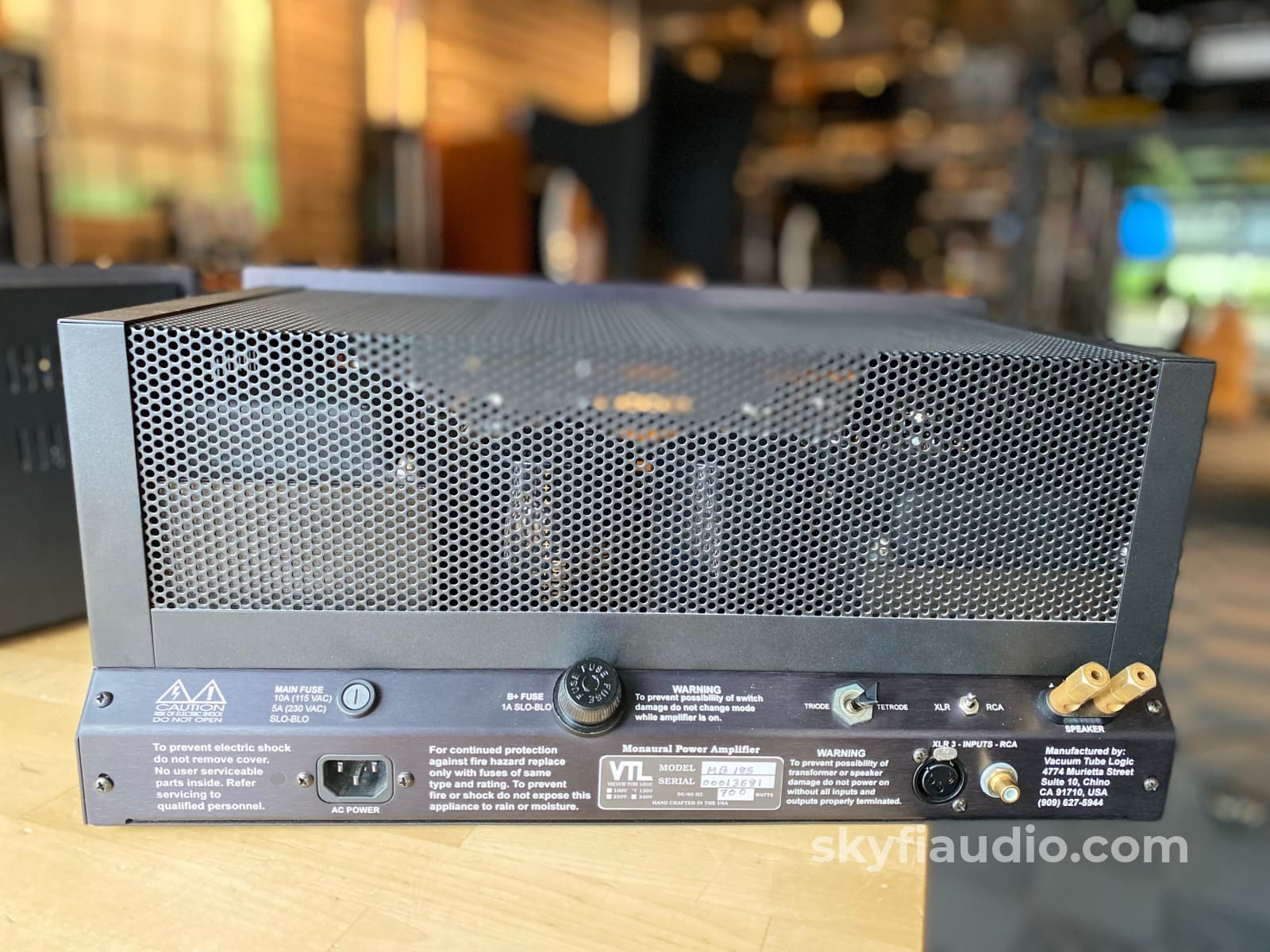
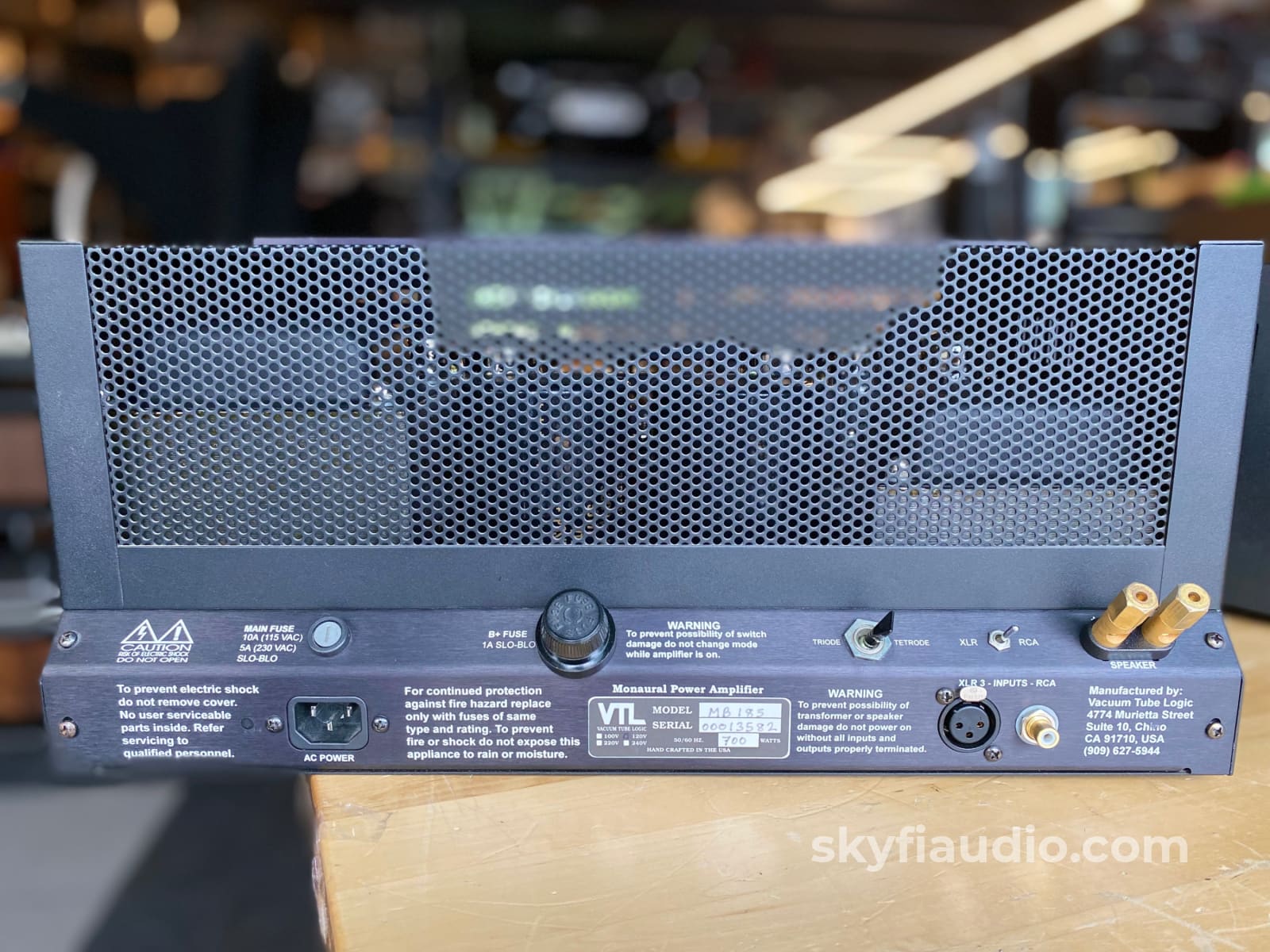
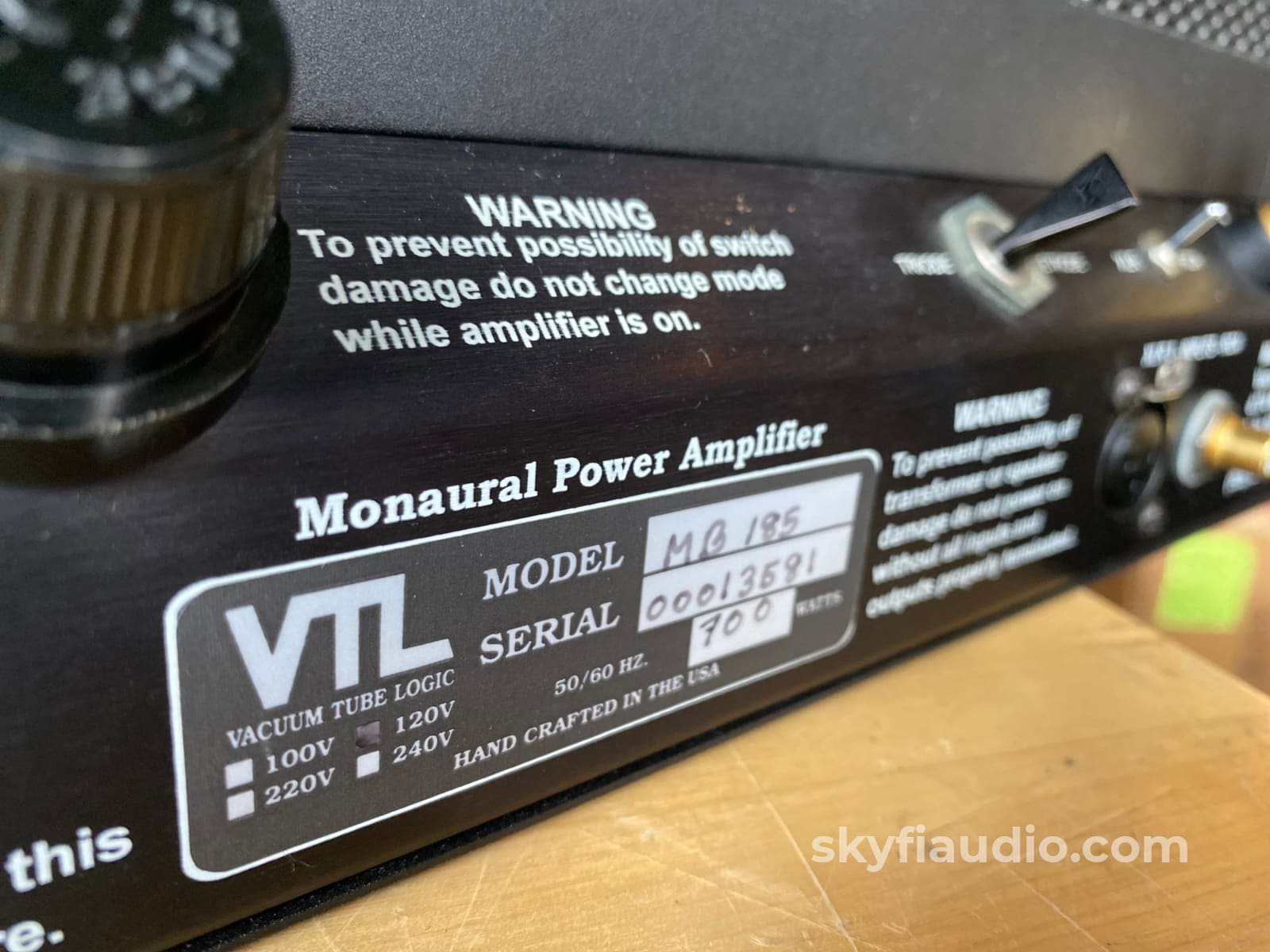
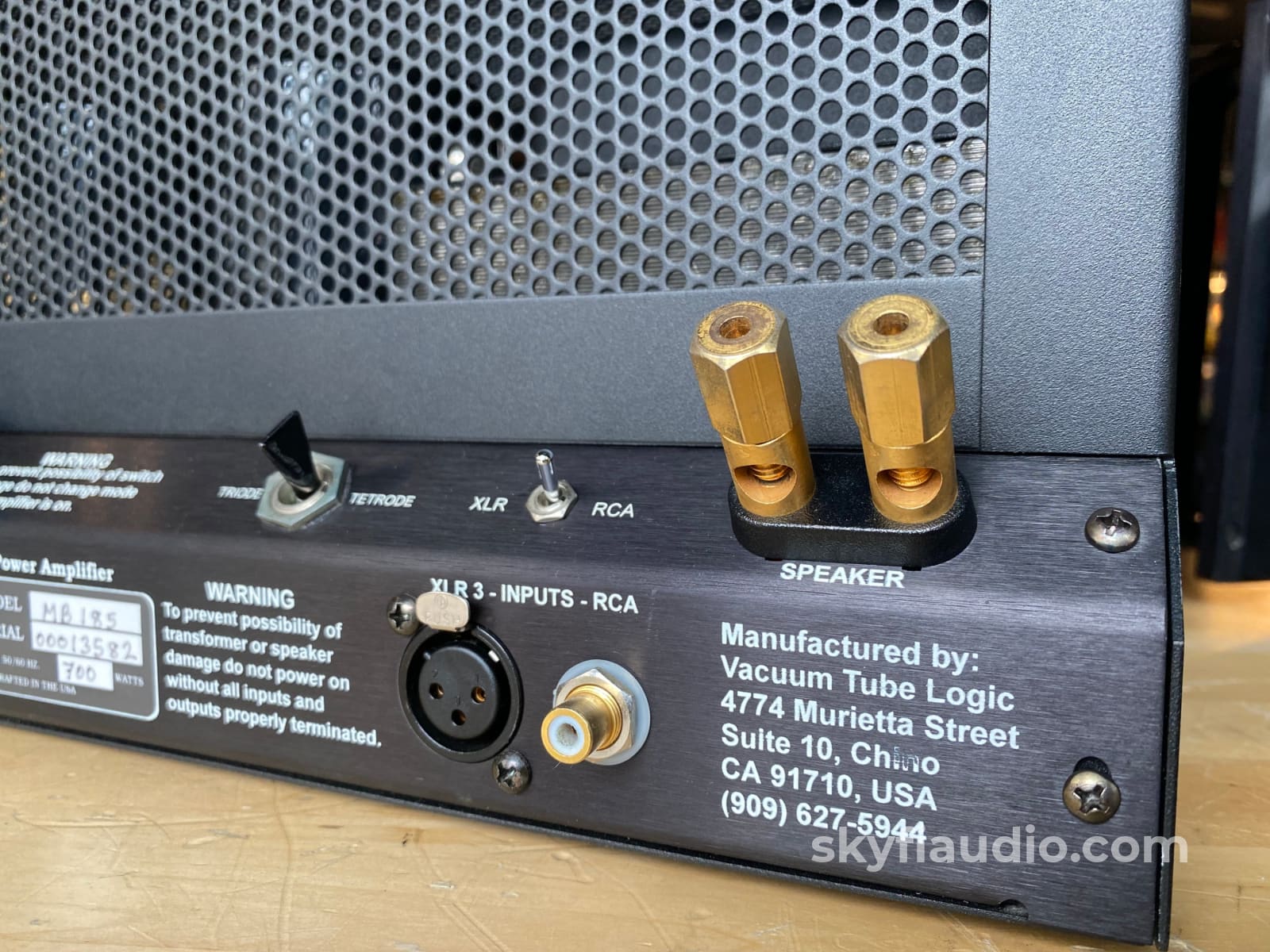
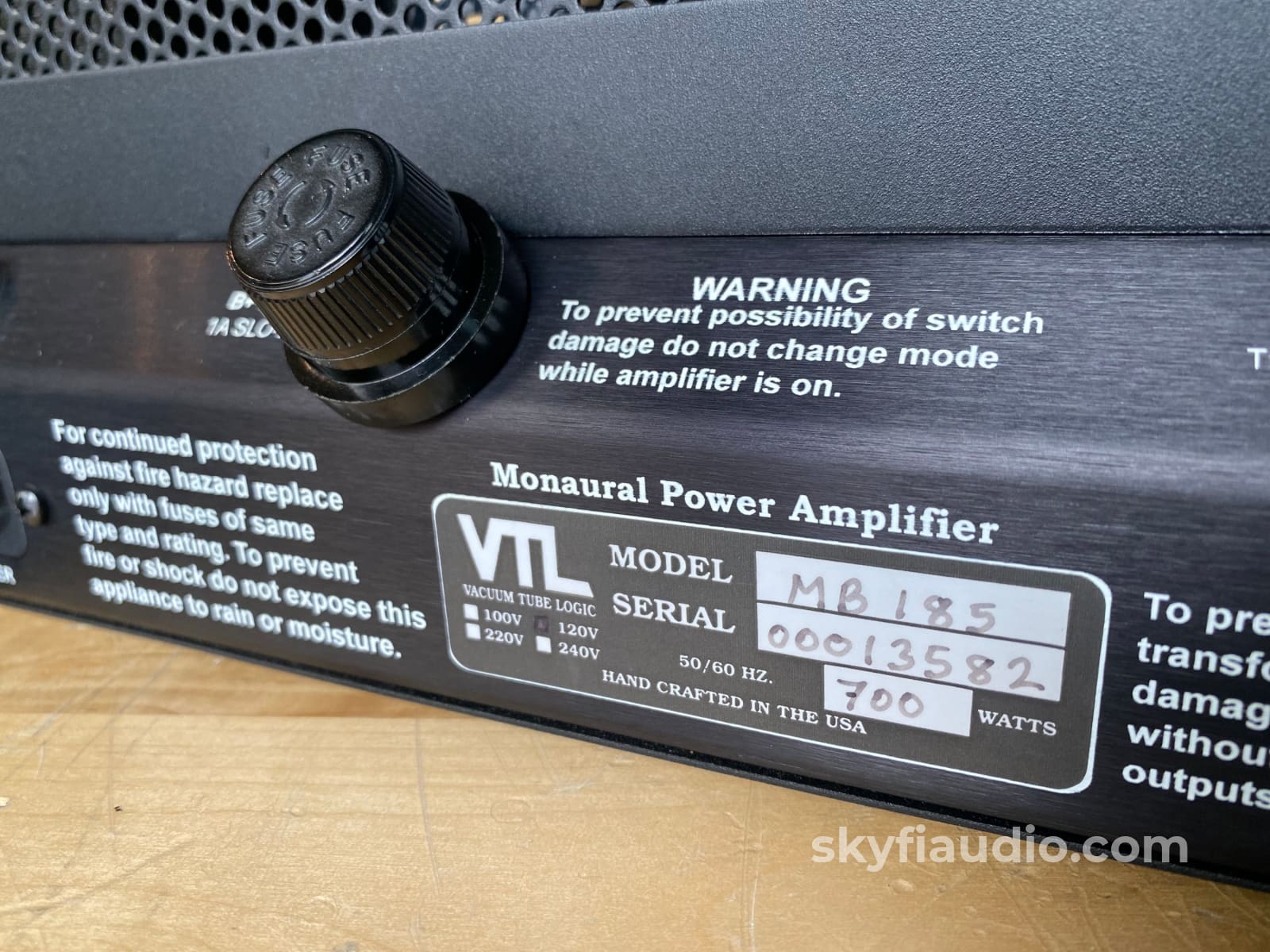
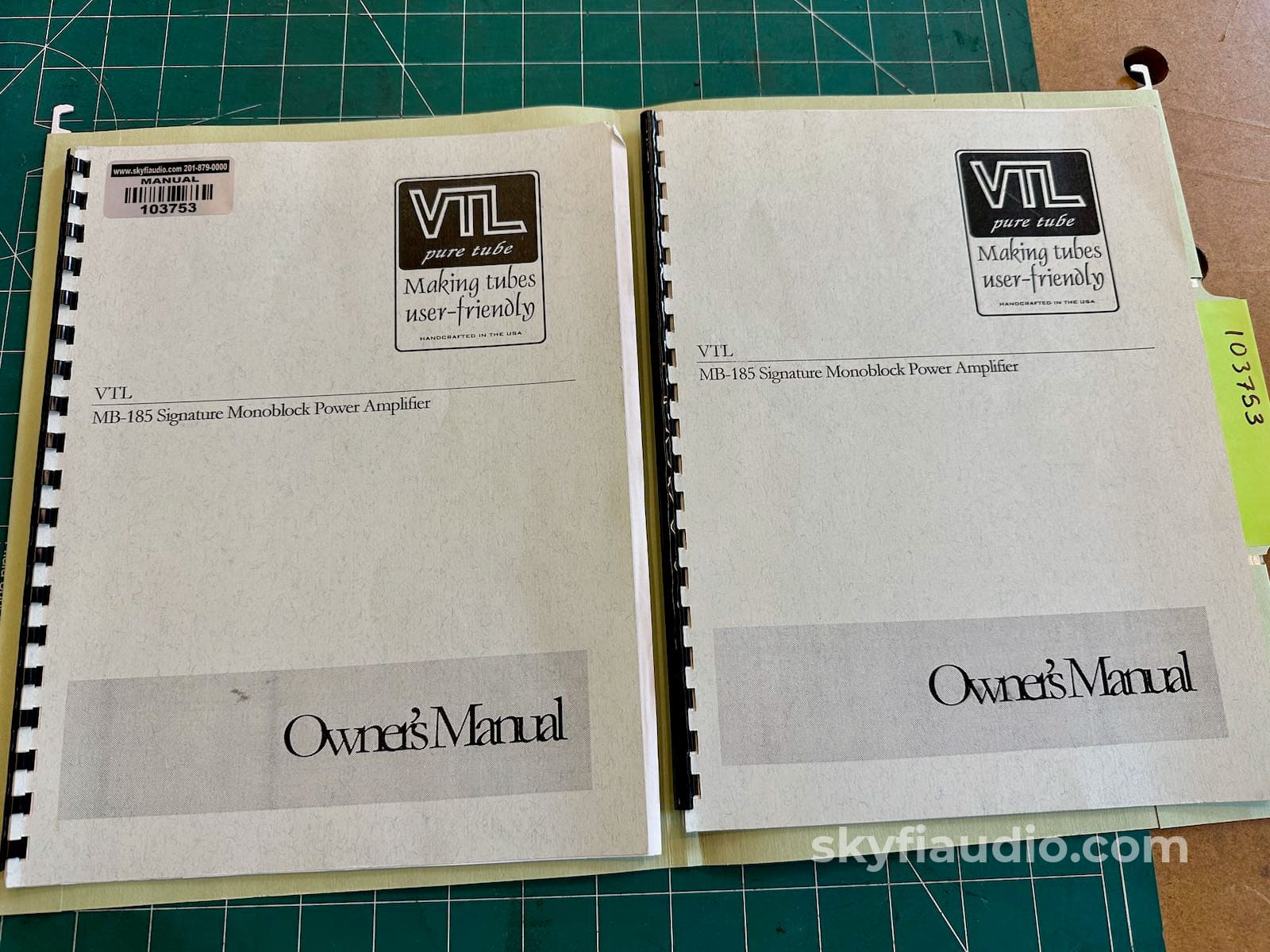
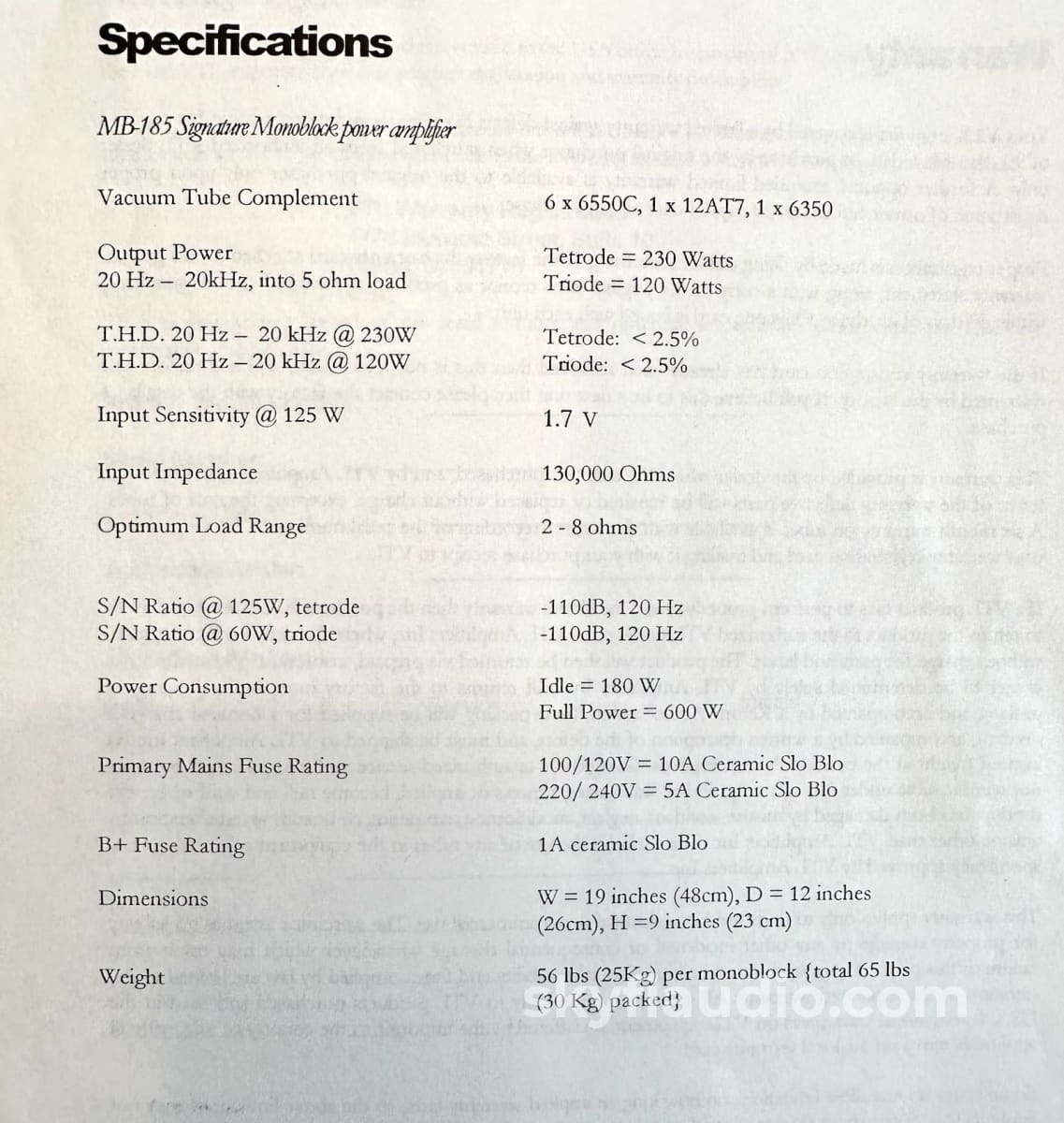

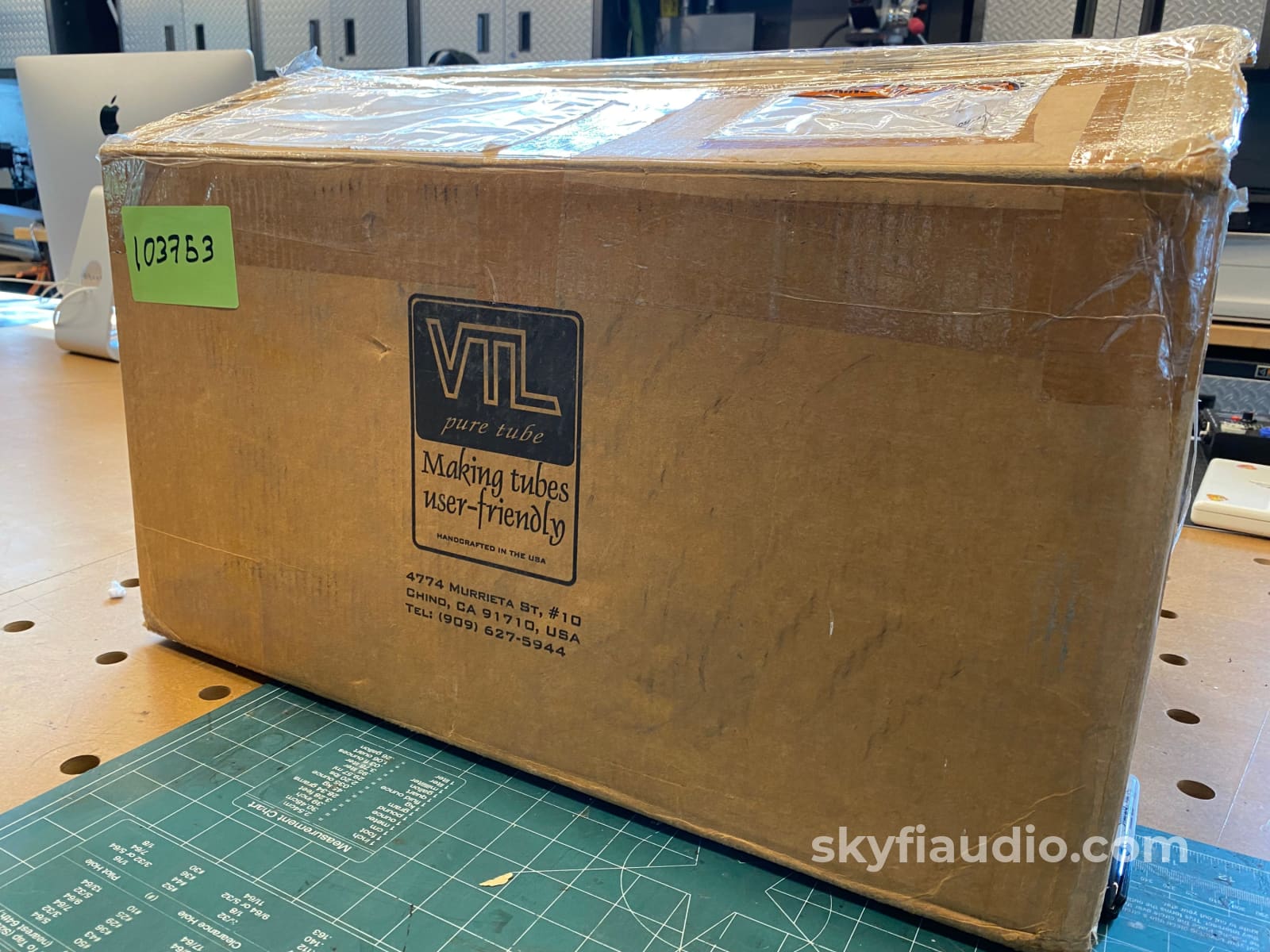
VTL MB-185 Signature Tube Monoblock Amplifiers - Super Clean
Free Shipping on Most Electronics - Excludes Speakers and Items Requiring Freight - Contiguous U.S. Only
Pickup currently unavailable at SkyFi 479

VTL MB-185 Signature Tube Monoblock Amplifiers - Super Clean
SkyFi 479
479 South Broad Street
Glen Rock NJ 07452
United States
General:
Gorgeous, compact, yet high-powered tube amplifiers from US maker VTL.
Most 200W amplifiers will break your back moving them around, but VTL managed to make these manageable *and* good looking!
Cosmetically they are very very clean with little signs of use.
Both monoblock amplifiers work as they should after thorough testing in our shop plus biasing. All tubes were tested and running strong with both amplifiers testing at over 200W at 4 ohms. (Tetrode mode).
Both will come to you with their original VTL boxes and owner's manuals.
Please see our photos for full specifications.
SkyFi Tube Notes:
• Both amplifiers were re-tubed shortly before we received them with four matched trios of JJ branded KT88's.
Tetrode-Triode Switching (From the manual):
Your VTL power amplifier gives you a choice of listening to your system in tetrode mode or in triode mode.
In tetrode mode, your amplifier is capable of delivering up to 185 watts per channel. This mode of operation is most suited to music which requires a wide dynamic response and lots of bass punch.
Triode mode for the MB-185, operating at approximately 90 watts per channel, is most suited for vocal and small instrumental ensembles. In this mode, you will experience the delicacy, detail, and intimacy of the music in its very best form.
-Caution: you must power off the amplifiers first before changing the tetrode-triode setting.
After the amplifiers are powered off, look for the switch marked "Tetrode Triode" in the back of the amplifier. Flip the switch in the direction as indicated by the markings.
Make sure both monoblocks have the same "Tetrode" or "Triode" setting. Power your amplifiers back on again, and your amplifiers should now be operating in the mode you specified.
Recommended Cables:
Kimber Kable - RCA Interconnects - Better
Kimber Kable - RCA Interconnects - Best
Kimber Kable - BALANCED XLR Connectors - Better
Kimber Kable - BALANCED XLR Connectors - Best
Kimber Kable - Speaker Cables - Better
Kimber Summit Series Monocle XL Speaker Cables (PAIR) - Best
Kimber Summit Series BiFocal XL Bi-Wire Speaker Cables (PAIR) - Best If Applicable
Kimber Kable - Power Cords - Better
Kimber Kable - Power Cords - Best
Specs:
MB-185 Signature Monoblock power amplifier
Vacuum Tube Complement:
6 x 6550C - *See above SkyFi Tube Note regarding installed KT88's.
1 x 12AT7
1 x 6350
Output Power:
Tetrode = 230 Watts
Triode = 120 Watts
T.H.D. 20 Hz - 20 kHz @ 230W:
Tetrode = < 2.5%
T.H.D. 20 Hz - 20 kHz @ 120W:
Triode = < 2.5%
Input Sensitivity @ 125 W:
1.7 V
Input Impedance:
130,000 Ohms
Optimum Load Range:
2 - 8 ohms
S/N Ratio @ 125W, tetrode:
-110 dB, 120 HZ
S/N Ratio @ 60W, triode:
-110 dB, 120 Hz
Power Consumption:
Idle = 180 W
Full Power = 600 W
Primarv Mains Fuse Rating:
100/120V = 10A Ceramic Slo Blo
220/240V = 5A Ceramic Slo Blo
B+ Fuse Rating:
1A ceramic Slo Blo
Dimensions - EACH:
W = 19 inches (48cm)
D = 12 inches (26cm)
H = 9 inches (23cm)
Weight - EACH:
56 lbs (25Kg) per monoblock
{total 65 lbs (30 Kg) packed}
SkyFi Testing Process for Tube Amplifiers:
We start with a visual inspection of all internal components to make sure that there are no signs of heat stress or damage. Capacitors are checked for telltale signs of predictive failure including bulging, shrunken wrappers, or physical leakage. We also inspect resistors and other passive components for signs of overheating. If tube arcing has occurred in the past we can usually spot discoloration on the output tube sockets. On vintage units we often spot check select capacitors for value and ESR.
If the amplifier passes visual inspection, we move on to a full test of all of the tubes. We use an Amplitrex AT-1000 Tube Tester which is capable of testing both emission and Gm with a high degree of accuracy. We document the results of each tube and replace any weak or suspect tubes before proceeding. When we power on tube amplifiers for the first time we usually use a variac and current limited AC supply and slowly raise the voltage up to nominal mains level while monitoring plate, screen, filament, and negative bias supply voltages where applicable. If everything is in order we feed a low level test signal into the amplifier’s input and monitor its output on an oscilloscope across an 8 ohm dummy load. At this point we are just looking to verify basic function and confirm that the output transformers are not damaged. Once we have verified that the amplifier is safe to operate, we connected it to full mains power. For fixed bias amps we set the bias to manufacturer spec. For cathode biased amps we monitor the plate to cathode voltage to determine if the output tubes are operating in a safe range. Once the output section is verified we move onto bench evaluation.
We start by feeding the input of the amplifier with a low level 1KHz test signal, slowly increase its amplitude while monitoring the amplifier’s output on an oscilloscope for signs of noise, clipping, distortion, or improper channel balance. We continue increasing the signal level until the amplifier reaches clipping. At this point we take an output power measurement and compare it to the spec sheet of the amplifier to verify proper performance. We finish off the bench evaluation with a 1KHz square wave check and a 20Hz to 20KHz sine sweep to assess the amplifier’s frequency response characteristics. This battery of tests will usually reveal if the amplifier has any issues that need further attention.
Before the device leaves the bench, we perform a listening test with actual music using a variety of preferred test tracks. Our benches are outfitted with familiar monitor speakers which help us identify inconsistencies that will not always show up on our test gear. The main things that we are listening for are hum or noise with no signal present, proper center image, clicks, pops, or any other obvious undesirable audio characteristics.
If the unit passes all of these tests it is moved to our long term testing rig where we simulate real word operating conditions for 6-8 hours. For tube amps we like to run this test at least twice. This allows us to monitor the unit for signs of thermal runaway or intermittent issues that only crop up when it has fully come up to temperature. We find this step to be essential, especially for vintage units.
|
Item |
Included |
|
Original Boxes |
Yes Included |
|
Manual |
Yes Included |
|
Remote |
Not Applicable |
|
Cables |
Yes - Power Only |
|
Physical Condition (Info Here) |
8 / 10 |
|
Working Condition |
10 / 10 |
Choose options




















